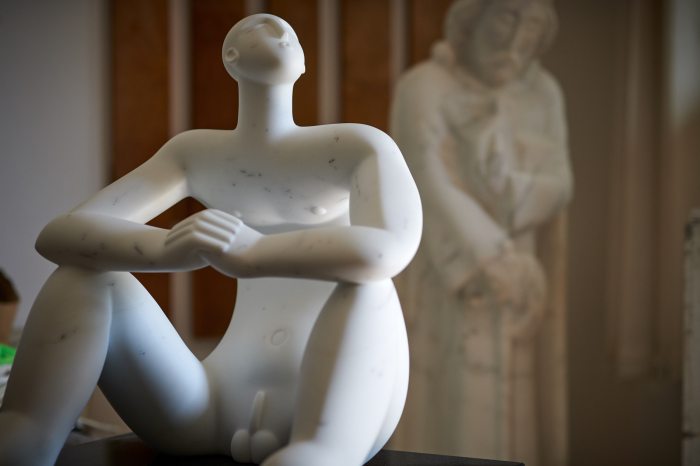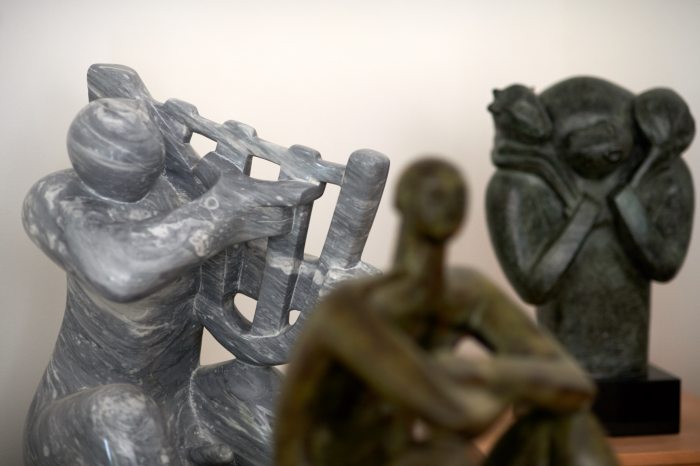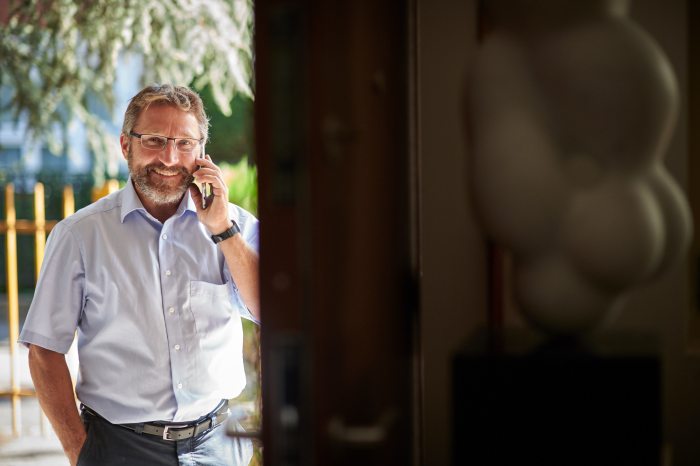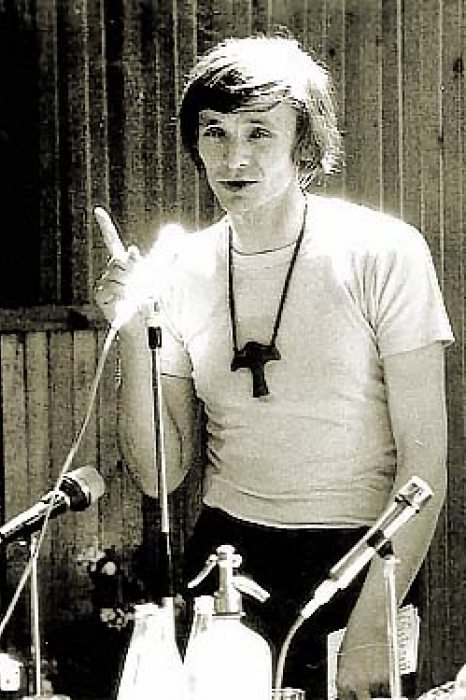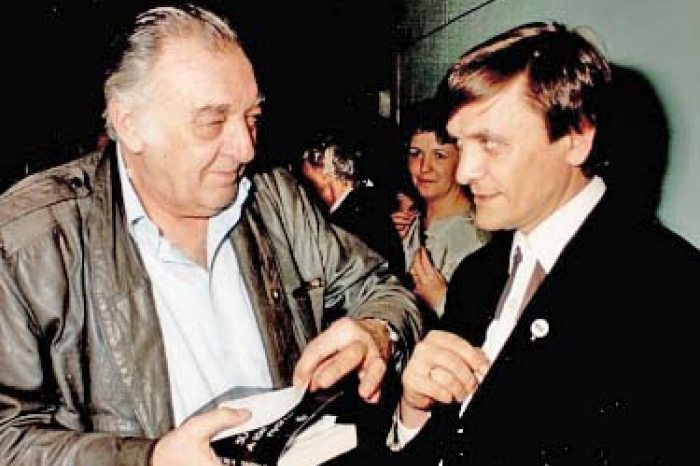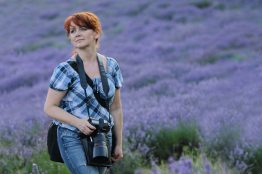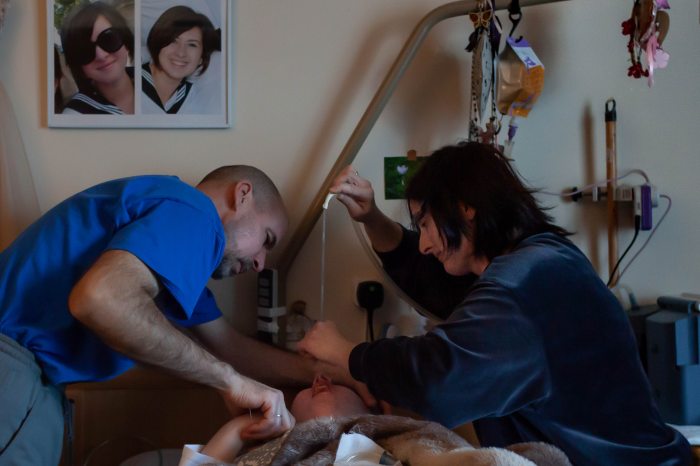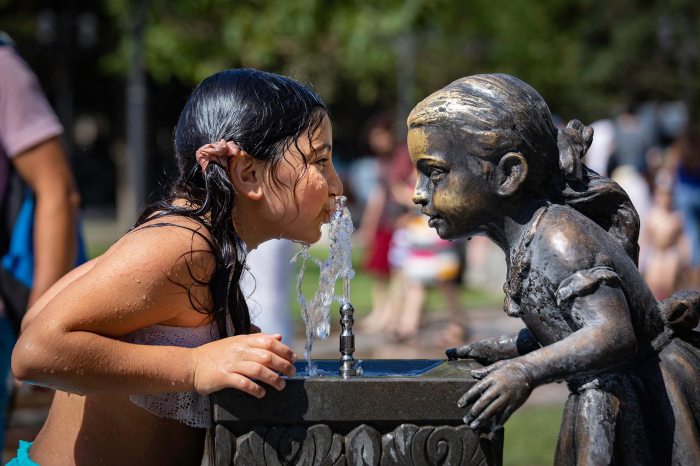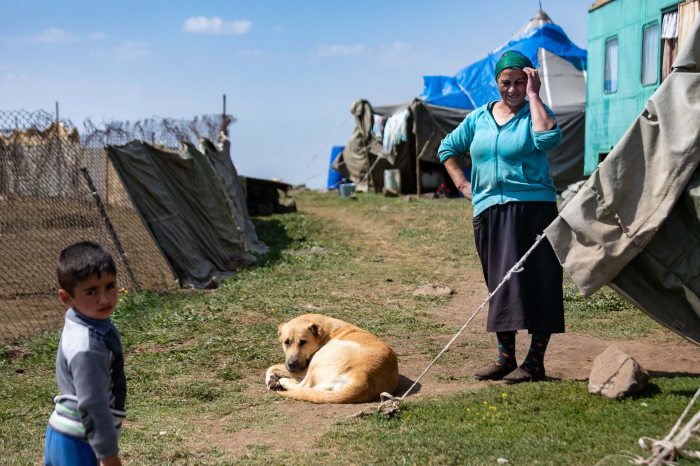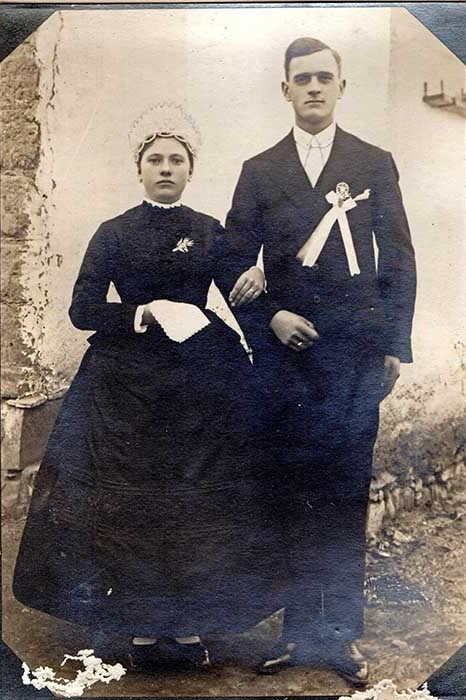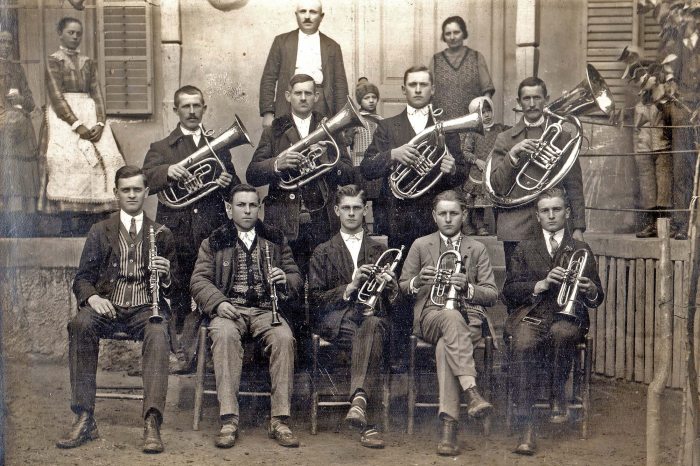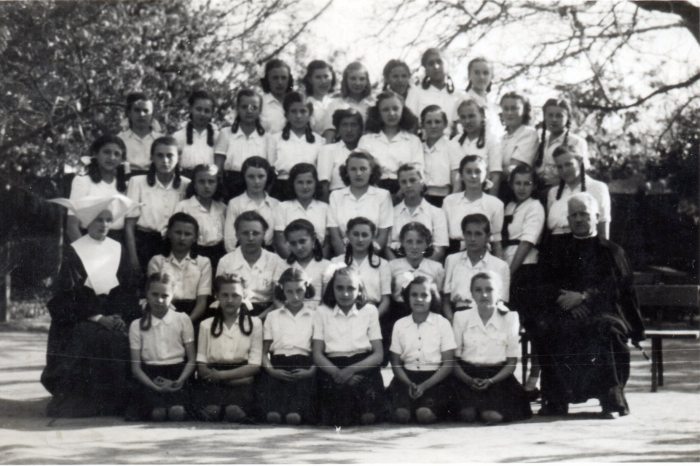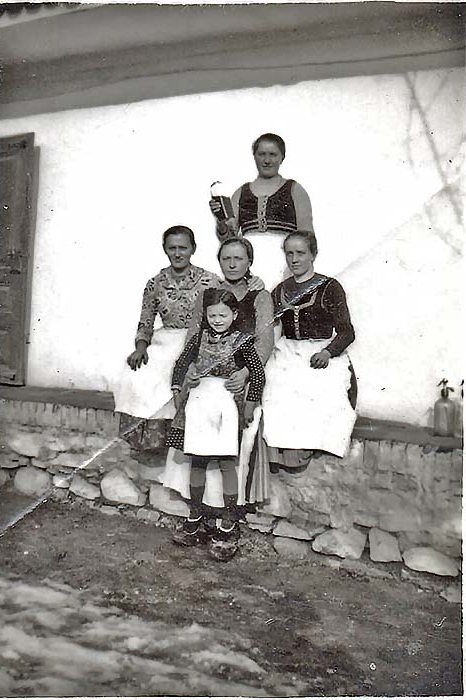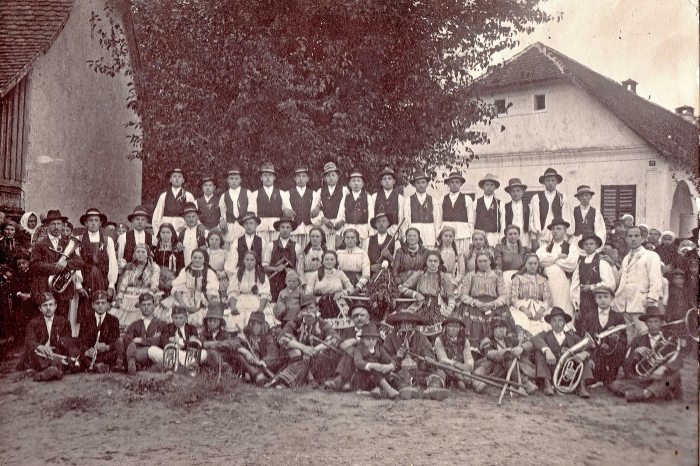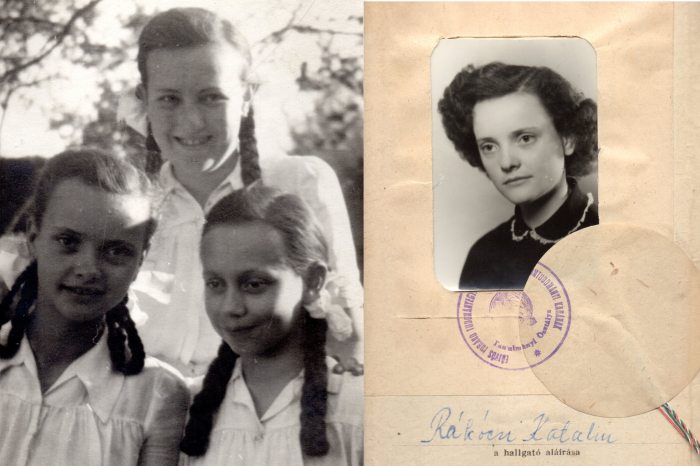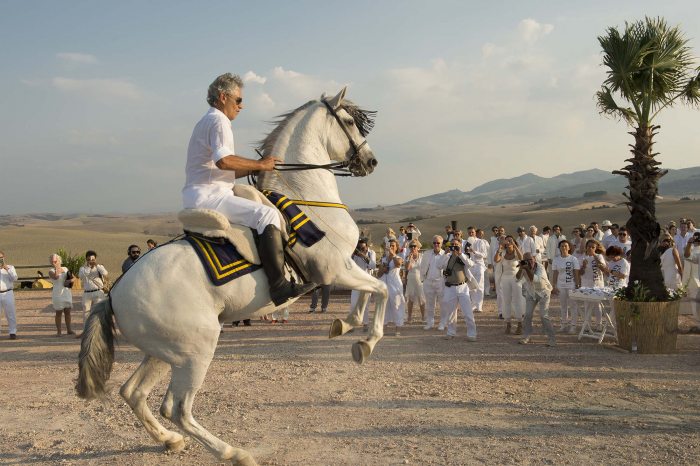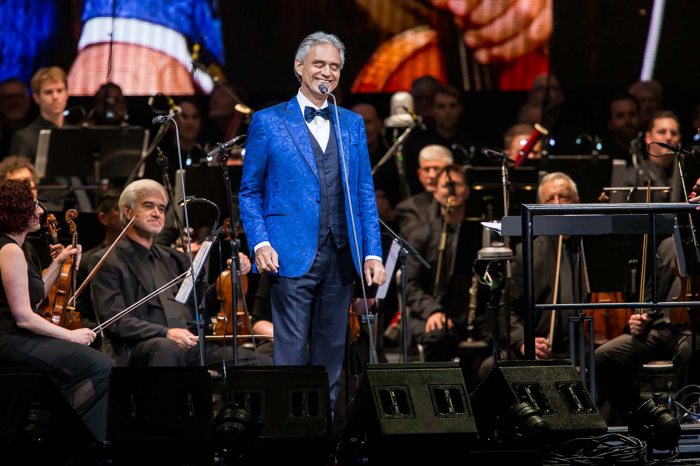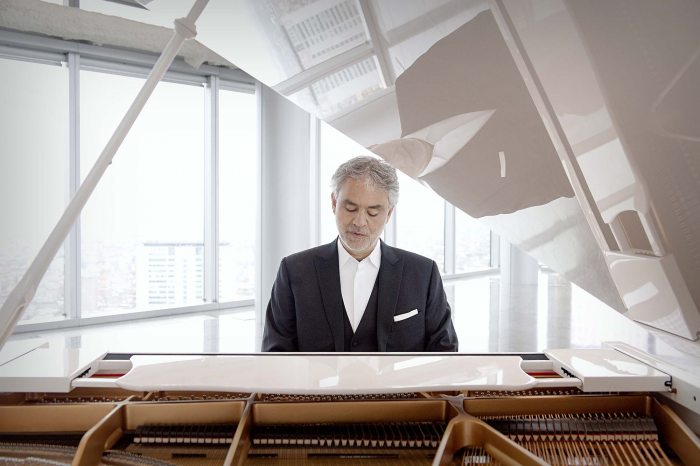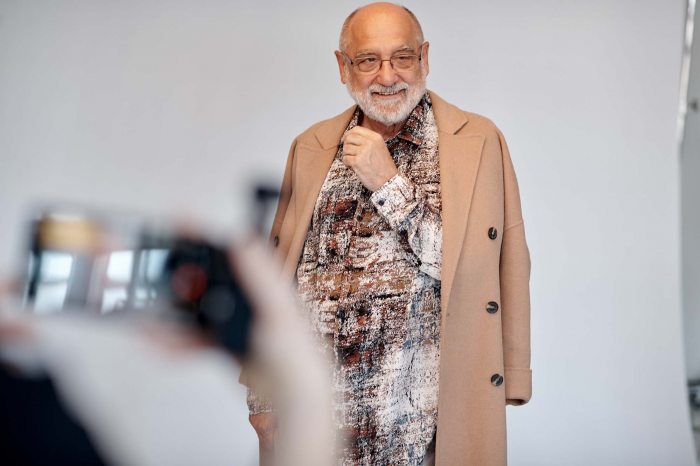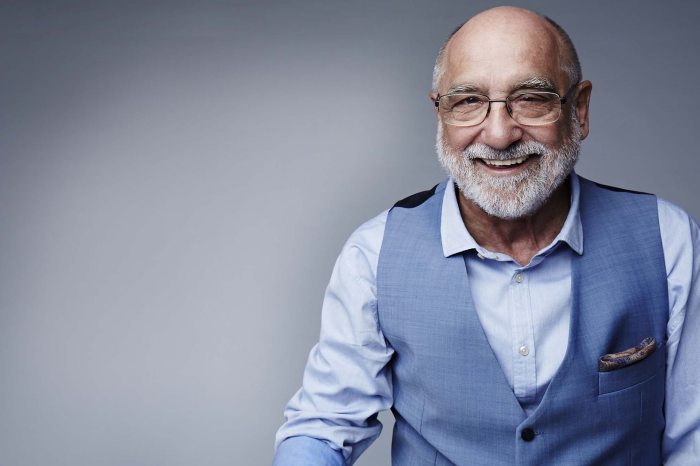Boldi: “I think that all art must be about immutability”

“A sculptor must accept that what is exhibited in a public space is also subject to vandalism,” says Boldi, who didn’t take much to heart the fact that his sculpture Stargazer was vandalized. In the Budapest studio of the artist, we talked about prudishness, the relationship between sculpture and space, and the afterlife of sculptures.
– How annoyed were you when, after some media exposure, your sculpture Stargazer – which was exhibited next to Műcsarnok as part of the National Salon – was vandalized (to be specific, phosphorescent phalluses were daubed on it)?
– Stargazer had already been exhibited several times, for example, it was included in last year’s Art Market at Millenáris Park. It stood for months in Castle Garden Bazaar as part of an exhibition and at no time did it suffer any form of attack, just like my other sculptures. People loved it, perhaps precisely because like the others, one can ‘take possession’ of these statues. Such as Stone Foot erected in Egyetem Square, Scooter-Rider in Váci Street and the 1956 memorial in Gesztenyéskert, which was made for the 60th anniversary of the Revolution. When we celebrate, anyone can pay their respects at the monument shaped like a white dove, they can place a wreath or take flowers there, and on the other days of the year, kids can climb on it – it’s a great photo location.
– The prudery with which the sexuality of the Stargazer was suddenly discovered is surprising in an age that is not known for its modesty. On this basis, shouldn’t all the statues of Antiquity be censored?
– Abroad, such objections in relation to a sculpture would not even arise. It featured more than once at ecclesiastical exhibitions and it didn’t bother anybody. The sculpture is not about emphasizing sexuality, nor are any of my other works, either, it is stupidity that there are people who try to find fault in this regard. I think the vandalism is the result of whipped up tempers but a sculptor must accept that what is exhibited in a public space is also subject to vandalism.
Even Michelangelo’s superb Pietà was vandalized at the time! One has to be prepared for this. But it is such primitivism that it is not worth wasting breath on.
It is not possible to create a sculpture that every single person likes, one has to learn to accept criticism. But I consider the outcry experienced on the basis of the criticism ridiculous. Still, it came in very handy for me. While there were articles about Stargazer I gained even greater publicity and I sold several works, too. The fact that the statue has been standing in a public space for eight years and there was never a problem, only now, as a result of a commentary, is a warning about how dangerous a weapon the media can be when it shapes the public discourse.
– You mentioned that Stargazer has nothing to do with emphasizing sexuality. What is the message of Boldi sculptures?
– If somebody looks at my sculptures, they find that all are looking upwards or are turning their head towards the horizon. Everybody can come to their own conclusions on what this means but this attitude obviously is in connection with my worldview, that is, the approach which shaped the world of forms characteristic of me.
– Boldi sculptures are truly characterful and inimitable. For example, all are somewhat rounded and chubby. Is your inner being similarly rounded and chubby?
– When I was a child, I liked to collect stones that had been eroded by the water into rounded shapes. I was fascinated that the river bed formed, shaped, smoothed their surfaces over millennia. The college where I graduated as a sculptor taught us to draw, to pattern on a model, and once I graduated the game with stone arrived. Since then I have been interested in how I could shape a sculpture like a pebble; from whichever angle I look at it, it always turns, and the soft, rounded forms direct its shape.
In whichever direction one turns the sculpture, all curves flow beautifully – I don’t like breaks. In my eye the human figure is also perfect, beautiful and I try to find the harmony of curves also in my portrayals of humans.
– Who do you consider to be your master? It is as if your sculptures show an affinity with the works of the Colombian fine artist Fernando Botero.
– When my world of form developed, I didn’t know about Botero. Obviously, plumpness is not only a characteristic of Botero, one can find these traits in early, beautiful, authentic and timeless African and Aztek sculptures as well. I reckon that the time somehow died for these early artists and I am the same way somehow with my works. I think that all art must be about immutability. Even if a work of art is taken out again after the passing of a few hundred years, it still retains the same features, it still radiates the same harmony as when it was made.
– In catalogues, the Brȃncuși effect is always brought up in relation to you. Why is this important?
– Brȃncuși, in moving from Romania to Paris, became one of the most influential artists in Europe. The fact is that his impact can be perceived in me in terms of the perfection of forms and curves, as well as in the conscious effort towards this end.
– You had the chance to study in Carrara. What experiences did you take away from there?
– I graduated after the change of regime, in 1995, then I studied in Villány at the master school until 1997. I made it to Carrara on a scholarship, where one could just about afford the stone from the scholarship fund but there was not much left over to feed myself.
– So you were dining out on stone soup?
– That’s about it! And I would like to express my appreciation to my wife because not everyone would have gone through the whole thing for these several years! The white marble I still use comes from the Michelangelo quarry, meaning that the Renaissance genius worked with exactly the same stone. When his sculptures are cleaned, they show up with exactly the same whiteness. Obviously, one has to approach such material with the proper respect, which is why for the final sanding a machine is never used, rather it is done by hand – this makes the surface silky, it almost brings it to life.
– Not all your sculptures are from white marble. What other materials do you work with?
– A few are made of black Spanish marble, the other sculptures are from bronze with an Aristide Maillol patina finish – it was the labour of 15 years until I reached the point where we were able to create this patina.
Since I mostly exhibit abroad, I had to come up with a quality that stands above the international average. In fact, this technique is of museum standard, the bronze itself is chiselled like stone.
– Looking through the sculptures, I see there is a whole series entitled Genesis. What is it that fascinates you in this subject?
– I am in the second year of part of the scholarship programme of the Hungarian Academy of Arts, for which on the one hand I tendered with the Genesis series, and on the other hand with the Awakening series, which is actually nothing more than a whole series of female figures braiding hair.
– But why make several versions of one sculpture?
– One statue unfolds from another. By the time I have finished one, another idea has already formulated in my mind: maybe it would be much better if I did it this way. True, there are many from Genesis, but the whole subject of genesis is inexhaustible: we can even use the word creation in the sense of creating form. What increasingly excites me is the relationship between space and sculpture.
– This is an interesting question because Scooter-Rider and Stargazer stand at several points in the world, that is, these sculptures were also made in multiple copies. Can these sculptures be placed anywhere? There are works of art that cannot be anywhere other than the specific place that the artist imagined them.
– First came the statue, then I looked for a place for it. With only a few exceptions, for example, the Mártonhegy sculpture of St. Martin, I do not work on commissions. I make my sculptures from an inner compunction and they then find their place in perhaps a public space or in a private or public collection. In fact, the majority of my collectors live abroad.
– Did you ever see a location and then imagine a sculpture for it?
– Once a particular location sparked something in me. This is how, for example, Stargazer’s twin, Seagazer, made it into a large private collection in Scotland. The work is scanning the sea, facing towards England from a point jutting out from the estate.
- You have made the Prima Primissima Prize figure since 2013 – is it pure coincidence that it somewhat resembles the Oscar Prize?
– One of the tender conditions was that it resemble to a certain extent the Oscar award but in the meantime it should also be specifically Hungarian.
That is why the figure holds a bow up high, because archery, arching towards the sky, striving upwards are all characteristics of we Hungarians, and what’s more these traits are in line with the spirit of the award.
– What did you feel when you heard that the sculpture of St. John the Baptist, which had hitherto stood behind the altar in the Church of St. John the Baptist in Felső-Krisztinaváros, was to be removed from the church on the orders of the new parish priest?
– It is in a good spot. It is important to recognize that when a building, a sculpture or a painting leaves the artist’s hand, it takes on its own life. Just like a child: we raise the child, dream about his/her life, but then the child makes his/her own decisions and lives his/her own life, instead of realizing our dreams. The fate of a work of fine art is determined by those whose hands it falls into. I cannot influence this, nor should I try. It has to be let go.
– Speaking of fate: you are the great-great-grandchild of Ödön Lechner and your daughter was immediately taken on to the graphics department of the fine arts university. Is perhaps talent inherited in an inevitable way?
– I think that Bolda will spend her happiest years under the guidance of József Szurcsik, who is blessed with fantastic teaching abilities and is an extremely good painter.
Yes, there are artist families, just as there are architecture and musician families. Genes are genes.
Practically speaking, art has been present in our family since the fifth generation because Ödön Lechner’s father was also extremely talented, just as were his seven siblings: although one became a doctor and another a translator of literature, all cultivated one branch of the arts or another to a high standard, one painted, one drew, another sculpted. Coming back to Bolda, she has been drawing since she was very young, whether in a good or a bad mood. From behind her talent there is a gleam of her intelligence that allows her to express something that is very rare.
– You will be 50 in October. Do you have any way of summing up these five decades?
– I am undergoing a self-examination: did I use my time wisely? I am a believer of ‘carpe diem’, I like living in the moment, plucking all its flowers, exploiting 24 hours in the day. But, in my fiftieth year, it would be nice to have a major exhibition where with 100-150 sculptures I could present a cross-section of my career so far. This anniversary spurs me on to work even harder.
